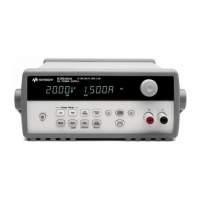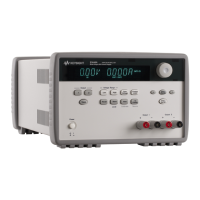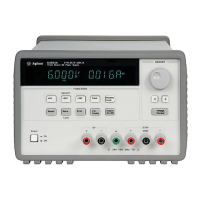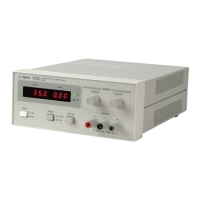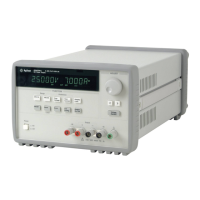
Do you have a question about the Agilent Technologies E3645A and is the answer not in the manual?
| Brand | Agilent Technologies |
|---|---|
| Model | E3645A |
| Category | Power Supply |
| Language | English |
Verify power supply readiness by checking items and performing initial power-on.
Check basic voltage and current output functions without load and with a short.
Steps to solve problems when the power supply does not turn on.
Procedures for changing line voltage and mounting the instrument in a rack.
Details on safety standards and electromagnetic compatibility compliance.
Overview of features, operational capabilities, and front-panel functions.
Guidelines for installing the unit and making output terminal connections.
Describes front-panel keys and their functions for power supply operation.
Step-by-step guide to set up and operate the power supply in CV mode.
Step-by-step guide to set up and operate the power supply in CC mode.
Instructions for setting up GPIB or RS-232 interfaces.
How to save and recall power supply configurations and states.
Setting the OVP trip level, enabling the circuit, and clearing conditions.
Procedures for enabling/disabling the power supply output and using external relays.
Information on self-tests, firmware revision, and system-related functions.
Details on connecting and configuring GPIB and RS-232 interfaces.
Introduction to calibration security, count, message, and overall process.
Lists SCPI commands and explains syntax conventions used in the manual.
Introduces basic techniques for programming the power supply remotely.
Details low-level commands for setting output parameters and measurements.
Explains triggering mechanisms and system-related remote commands.
Covers remote commands for state storage and calibration.
Details interface configuration and SCPI status register management.
Introduction to SCPI language structure and conformance information.
Explains how errors are retrieved, cleared, and displayed on the unit.
Lists and describes specific error codes related to command execution.
Details error codes indicating failures during self-tests or calibration.
Introduces example programs for remote interface applications.
Provides sample code for controlling the supply using C/C++ and Excel macros.
Introduces basic operation of linear power supplies and the unit's characteristics.
Explains the basic design model and output characteristics of the power supply.
Methods for extending the voltage and current output ranges using series/parallel connections.
Discusses factors affecting remote programming speed and response.
Introduces performance and supplemental characteristics of the power supply.
Detailed performance metrics including accuracy, ripple, and regulation.
Additional characteristics like temperature, stability, and overshoot.
Details on returning units, troubleshooting, tests, and calibration.
Steps to check before returning a unit and available service types.
Guidelines for safe shipment, ESD prevention, and component handling.
Hints for common failures, self-test procedures, and error code interpretation.
Recommended test equipment and considerations for performance verification.
Detailed procedures for verifying Constant Voltage and Constant Current performance.
Steps for calibration, security, records, and error messages.
Information on ordering parts and accessing schematics and diagrams.
